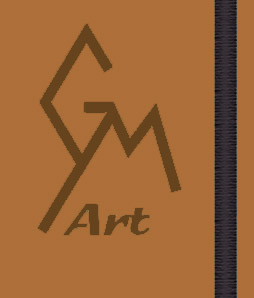
Galleries
Art Smarts
Good Composition is always determined by good selection. Fine painting is matter of proper taste and judgement in choosing the motive, accepting
some parts, discarding others, and making changes or alterations throughout the procedure. Selection, like all factors in art, is difficult to define or separate from the composite process in painting. Judgement varies according to the subject, type of composition,
and the viewpoint of the painter. Selection is never the same in two instances: a choice in one case would not do in another. Therefore, in order to develop good taste and judgement
in selecting, it is necessary to develop the feeling for artistic unity. If we can fully appreciate harmony in pictorial design, we more easily select the parts and judge the measure of
influences that create it. |
John Carlson on the Theory of Angles and Consequent Values
This theory sets forth my belief that the prime cause of big light and dark relationships in a landscape is the angle which such masses present to the source of the light(sky). Our landscapes prime elements - trees, ground, mountains, etc. - receive differint degrees of light from the sky according to their plane. It is chiefly this difference of plane that establishes them as darks, half-tones and semi-lights as related to one another. These "steps" from dark to light are called values. There are four prime planes in a landscape. (1) is the flat-lying plane, the ground. (2) is the upright plane of the trees. (3) is the slanting plane of the mountains. (4) is the apparent arch of the sky, the source of light. The key to this Theory of Angles is that light masses and dark masses, and half-ligh masses and half-dark masses are light or dark or half light or half dark not because of any color cast they may have but because they present different angles to the light that falls upon them from the sky. The first element, the sky, the source of light, is invariably the lightest value under any or all conditions. The second element, trees or upright planes must appear as masses against the ground. Trees are darker, as a rule than the ground because of the plane presented to the overhead light and also on account of the actual local color of most foliage which is of cooler color than any other ground elements. The third element, the slanting plane, that is the hills or mountains are semi-dark in value, somewhere between the value of the ground and that of the trees. The last element is the ground or flat-lying plane. Light from the sky falls most directly upon hte ground and consequently raises or lightens that element in value. This is true, regardless of the differing local colors of objects, such as bare earth, grass, stones grain fields, flowers. It is, therefore, important that in spite of the great color difference of the ground objects just named, they be held in restraint as not to destroy the generally light-flooded flat-lying plane with any too great differences of light and dark.
Emile Gruppe on the Color of Light and Shadow
Local color is merely a starting point. The local colors of our black boat, red barn, and green tree are all profoundly influenced and transformed by the color of outdoor light. On the Average sunny day, objects are affected by the two sources of light: (1) the sun, which is warm and yellow and (2) the sky, which is cool and blue. Whatever isn't colored by the rays of the sun is colored by the rest of the sky. Generally speaking, a red barn in sunlight has a touch of yellow in it - and looks orangy. The shadow side catches cool light from the sky and so tends toward purple (blue plus red). A green tree will look yellow - green in the light. A sunlit black boat will have a tremendous amount of red in it. To see the effect of light on objects. stand in a field on a sunny day and look into the sun. You'll see that the sun lights up the grass, making it look a vivid yellow-green. If you suddenly turn and look in the opposite direction, away from the sun, you'll see that the grass appears darker - and very blue. It picks up a lot of cool color from the sky. The local color of the grass will be seen, if at all, only on overcast days when the sun and sky are hidden and have little chance to affect objects.